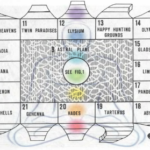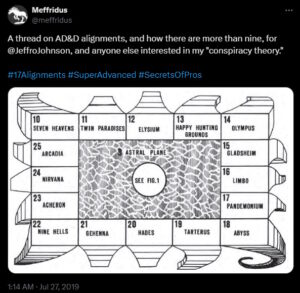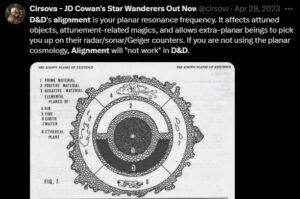Once you fully adopt the classic adventure game model you have some serious and subtle obstacles to overcome. Overnight the campaign makes a quantum leap from ‘us against the GM’ to ‘everybody against everybody’, and that means an exponential increase in the threats that you – as a player – have to consider, and plan for.
It represents a daunting prospect. How do you know who to trust?
In a fully realized campaign world, natural alliances should be an obvious outgrowth of factional goals. Several barons seeking the overthrow of the King, even if each Baron sees himself sitting on the throne at the end of the conflict, are clearly in a position to throw in together. If two factions exist within the predominant religion of the realm – one pro-monarch and one not-so-much – it should be obvious which faction those Barons should reach out to for spiritual aid and political cover.
But in a fully realized campaign world, it won’t be immediately obvious which Barons are which and which sect is which. Not only that, but a fully realized campaign won’t just have one central conflict such as a looming civil war to threaten peace and stability. It will have as many conflicts as player relationships. Sorting all those political shenanigans out via role-play can quickly turn into a mess of paranoia and analysis paralysis.
Which is where the alignment chart comes riding to the rescue.
At least, it does if you use them properly.
Alignment creates shortcuts to alliances, and that’s a good thing. When the pending regicide is placed within the framework Gary provides, it becomes much easier to sort out the teams. Natural allies are the default assumption, and let you get to the gaming and role-play much faster.
They aren’t handcuffs, and they don’t guarantee unity in all things. Different members on the same team often have very different ideas about how to go about winning the game. Rather, they are a solid, universal starting point from which all players begin the negotiations. They streamline the sorting process in a natural and well understood way. And thus, they help to make PvP play possible for all but the most simple-minded and materialist players.



